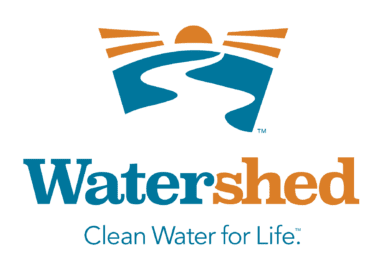Exploring Innovative Conservation: Our Trip to the Wild Mile in Chicago

Takeaways and New Ideas for Our Region
One of the most remarkable aspects of the Wild Mile is its success in promoting biodiversity in a heavily urbanized area. The wetlands serve as microhabitats for smallmouth bass, pumpkinseed fish, and various macroinvertebrates, creating a multi-tiered ecosystem. They have also begun reintroducing mussels, a species crucial for water filtration, into the habitat using sandboxes within the wetland system.
We were fascinated to see their solar-powered water quality monitoring system, which could inspire us to incorporate continuous monitoring methods into our own local projects. Since 2018, the Wild Mile team has been sampling nutrients and suspended solids in the water and have noted significant improvements in water quality, particularly with nitrogen and phosphorus levels, thanks to the urban forest upstream.
 The Wild Mile also emphasizes public engagement. The floating wetlands are as much a public relations tool as they are an environmental restoration effort. The boardwalk, which extends over the canal, provides direct access to nature for residents and visitors, connecting them with the water in ways traditional green infrastructure often cannot. They host events like bird-watching, kayaking workshops, and even marshmallow roasts, all of which draw the community in and foster long-term volunteer engagement.
The Wild Mile also emphasizes public engagement. The floating wetlands are as much a public relations tool as they are an environmental restoration effort. The boardwalk, which extends over the canal, provides direct access to nature for residents and visitors, connecting them with the water in ways traditional green infrastructure often cannot. They host events like bird-watching, kayaking workshops, and even marshmallow roasts, all of which draw the community in and foster long-term volunteer engagement.
This focus on community involvement, combined with creative programming, aligns with our values at Watershed. We were especially inspired by how they built a volunteer base that is not only maintaining the project but actively connecting people to the natural environment. Many volunteers shared stories of how they first engaged with the Wild Mile through events and now play an integral role in the project’s upkeep.
Possibilities for the Ozarks
 The Wild Mile offered us fresh perspectives on urban conservation and how floating wetlands can thrive in unconventional spaces. For our team, seeing firsthand how this project balances the needs of the ecosystem with community engagement was invaluable. Their success with floating wetlands in a canal, using a mix of materials such as plastic bases, rocks, mulch, and clay aggregates, has given us insight into how we can enhance our existing wetlands.
The Wild Mile offered us fresh perspectives on urban conservation and how floating wetlands can thrive in unconventional spaces. For our team, seeing firsthand how this project balances the needs of the ecosystem with community engagement was invaluable. Their success with floating wetlands in a canal, using a mix of materials such as plastic bases, rocks, mulch, and clay aggregates, has given us insight into how we can enhance our existing wetlands.
We returned from the trip filled with ideas and inspiration, excited to explore how we can implement similar strategies in our own conservation work. We look forward to deepening our connection to the community and advancing our environmental outreach, just as the Wild Mile has done so successfully in Chicago.
Once again, we extend our heartfelt thanks to the MDC for sponsoring this trip. The knowledge and inspiration we gained will be instrumental in shaping the future of conservation efforts in the Ozarks. Stay tuned for updates as we continue exploring these possibilities!

